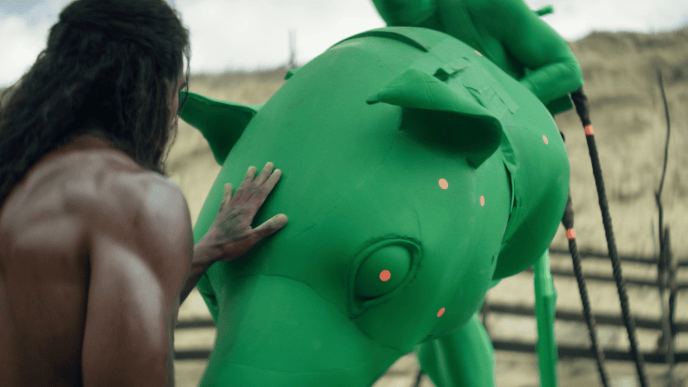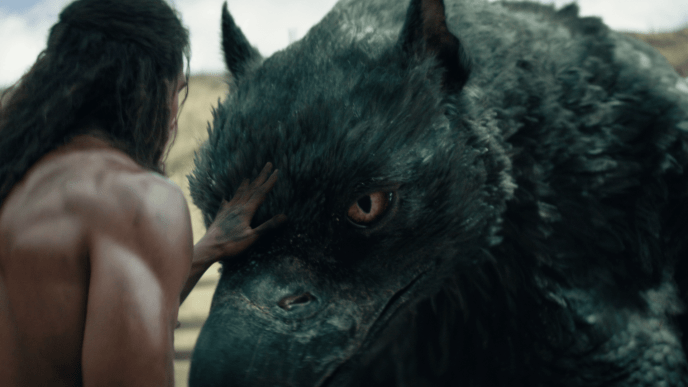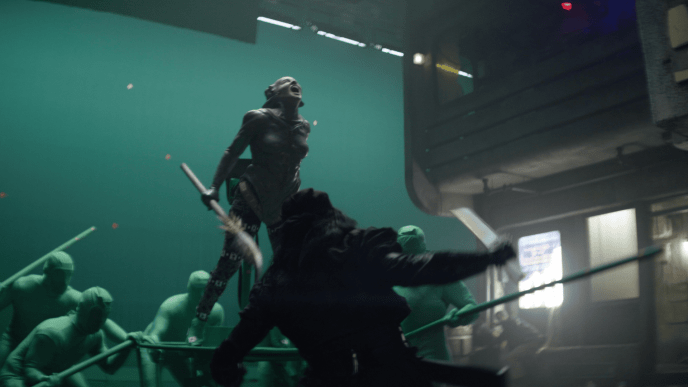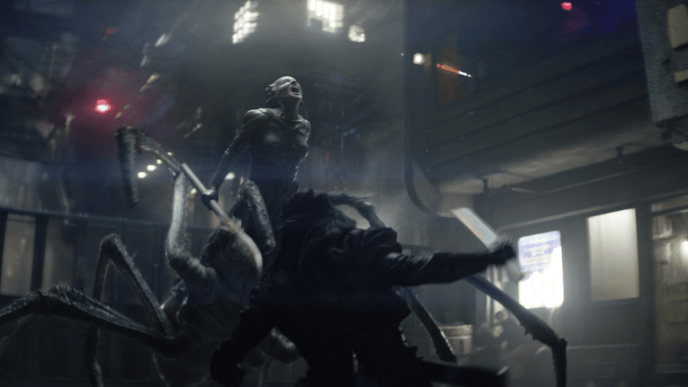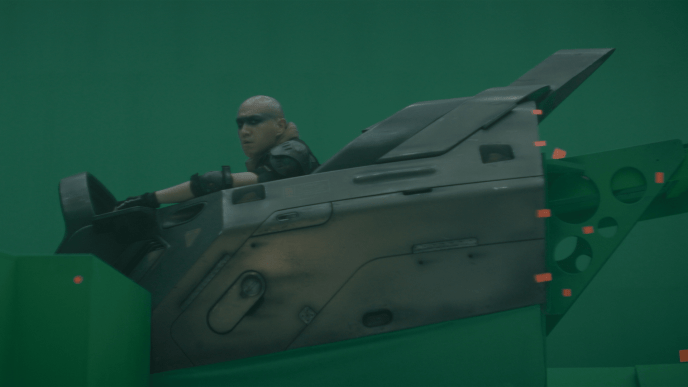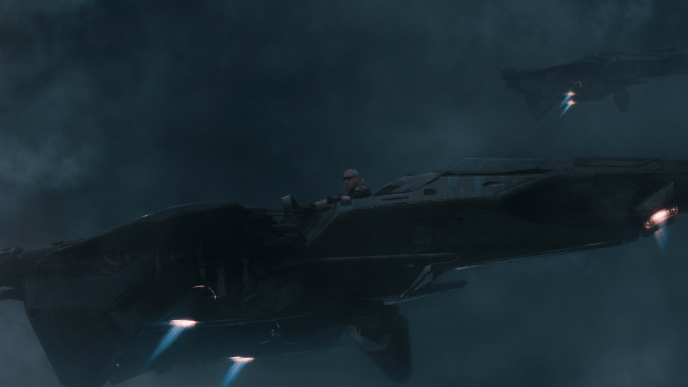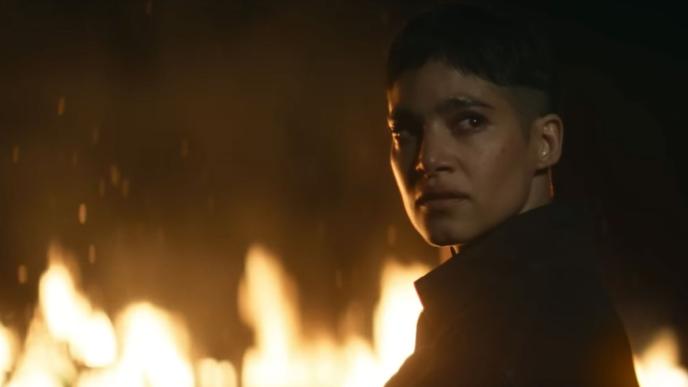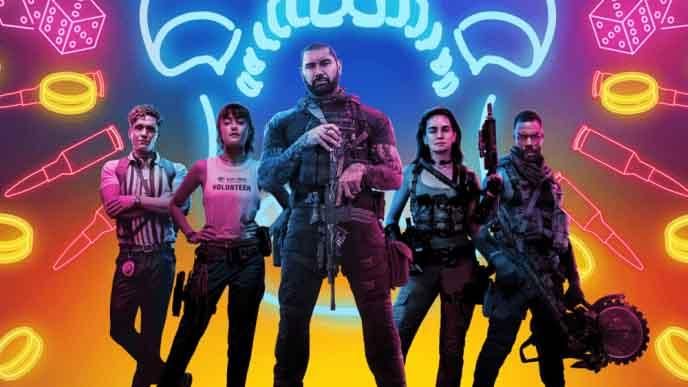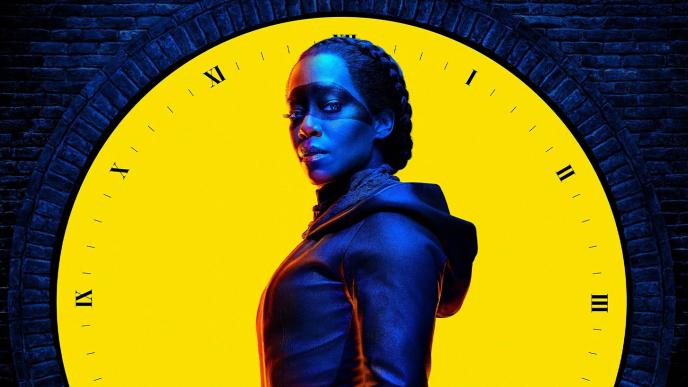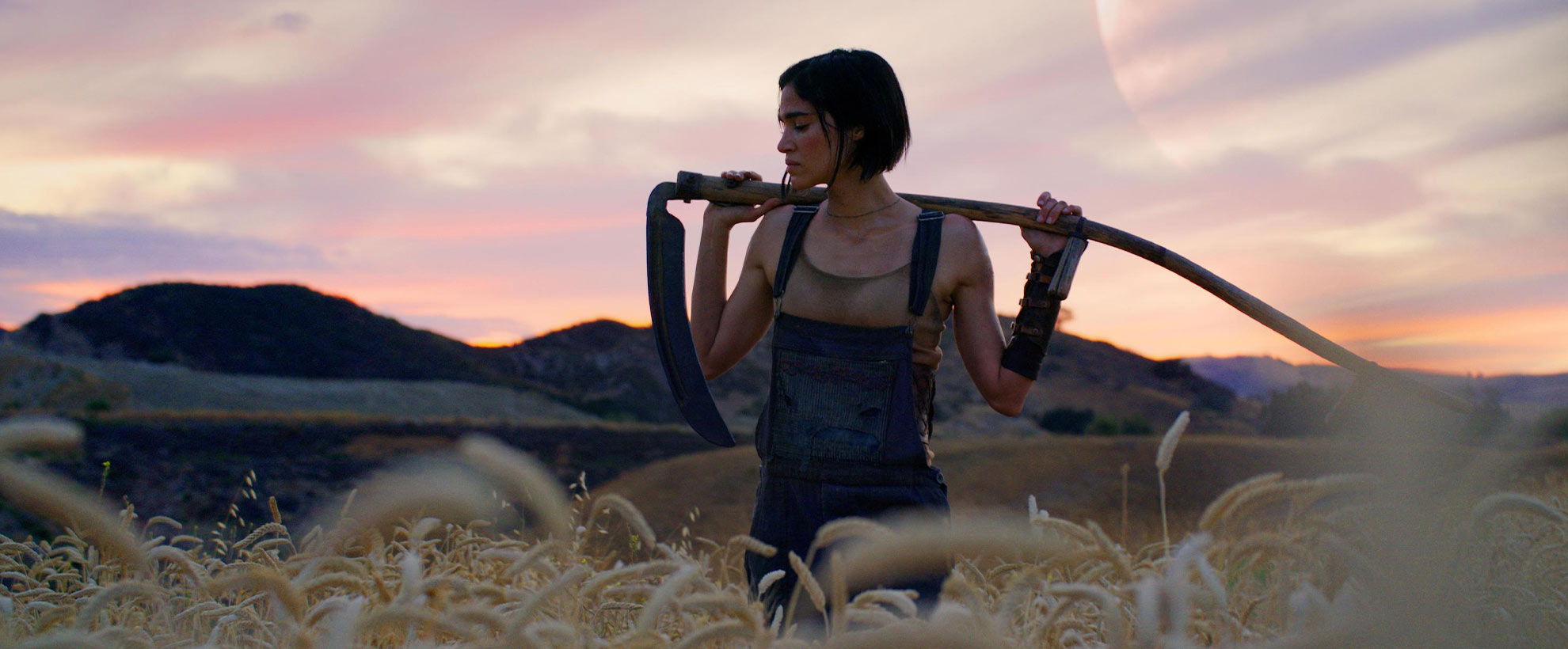
Rebel Moon — Part One: A Child of Fire
Following a successful collaboration on Army of the Dead, Framestore once again joined forces with filmmaker Zack Snyder to bring his ambitious two-part space opera, Rebel Moon, to Netflix. Framestore served as the lead VFX partner for Rebel Moon — Part One: A Child of Fire, delivering over 580 complex shots.
Framestore has been and continues to be an immensely satisfying working relationship. It’s a rare privilege to create with such thoughtful and talented people - they continue to produce work that goes beyond, in quality and creativity, what we could only have dreamed to be possible.
Led by VFX Supervisors Bob Winter and Bryan Litson, our teams in Montreal, Vancouver and Mumbai gave life to five interstellar environments, stunning creatures, dozens of digi-doubles, spaceships, and complex FX-heavy action sequences. This project required the creation of hundreds of custom tools and the enhancement of the USD “Universal Scene Description” pipeline, all of which were tailored to encapsulate Snyder's unique filmmaking style.
A notable aspect of this project was the distinctive choice of lenses used during principal photography. Snyder opted for anamorphic lenses, and designed custom lenses specifically for this project. The complexity of these optics presented a significant challenge with each lens in the package being profiled so the team could replicate its unique optical properties. “Among all the lenses I've worked with, these were probably the most stylized and had the most unique characteristics. What makes it challenging for us is that the sheer complexity of the optics forced us to develop our own setups to be able to match how those lenses see the world”, states VFX Supervisor, Bob Winter.
Partnering up once again on the Rebel Moon films was a no-brainer, with the teams from Montréal, Vancouver, and Mumbai creating incredibly complex and impactful creatures including the Griffin-like Bennu and the grotesque Spider-Women, Harmada. Some of the most significant environments that added vast scope and scale to Part 1: A Child of Fire were also executed at Framestore and included the desolate and sun-bleached Neu-Wodi, the polluted and congested city of Daggus, and the endlessly foggy, floating trade depot of Gondival.
Otherworldly creatures
Framestore brought life to the otherworldly creatures for Rebel Moon, the Bennu and Harmarda.
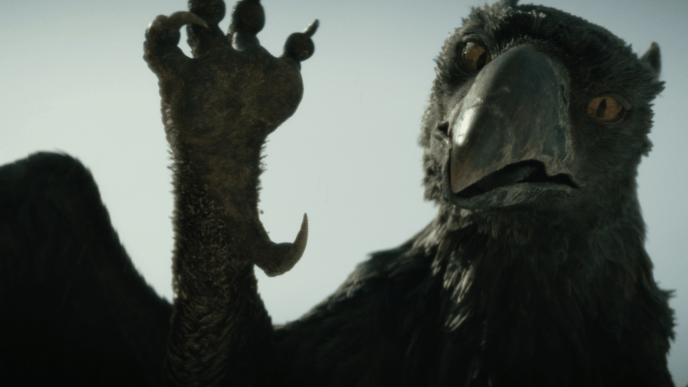
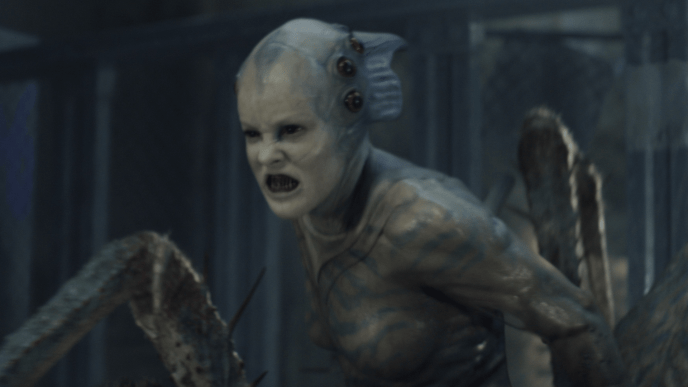
Bennu is a griffin-like creature from Neu-Wodi. “The griffin in itself is a mythical creature with a rich history and a lot of modern interpretations, making it a very interesting subject for us to explore. We drew inspiration from a large number of griffin variations found in folklore, literature and contemporary media. This research allowed us to gain a deep understanding of the various forms the creature has taken over time”, explains Creature Supervisor, Dave Gagnon. The team's objective was to identify and amalgamate key features consistent across various griffin depictions, such as the fusion of a lion and an eagle. “We embarked on an artistic journey, aiming to retain the griffin's essence while infusing our unique creative touch”. All along, the team worked closely and iterated a lot with the client to ensure the designs aligned with the overall vision of the film.
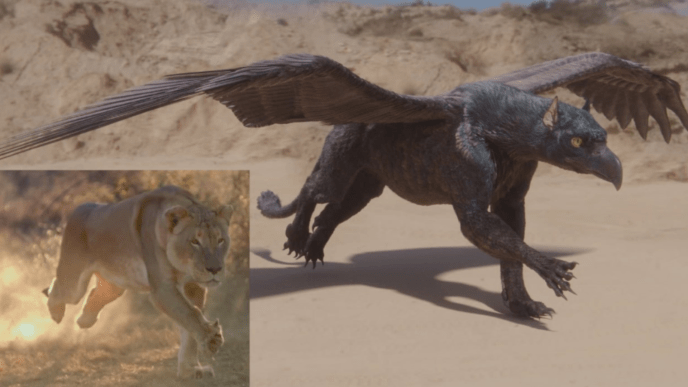
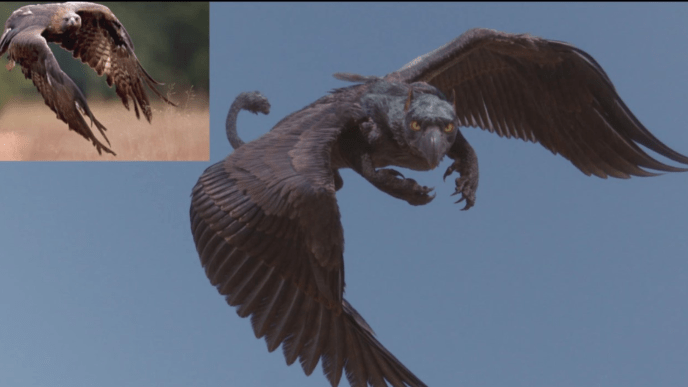
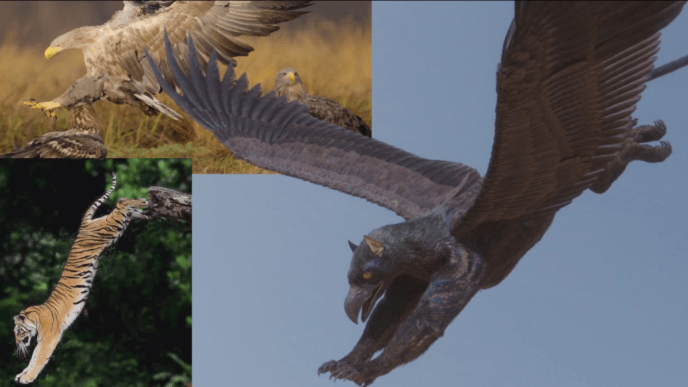
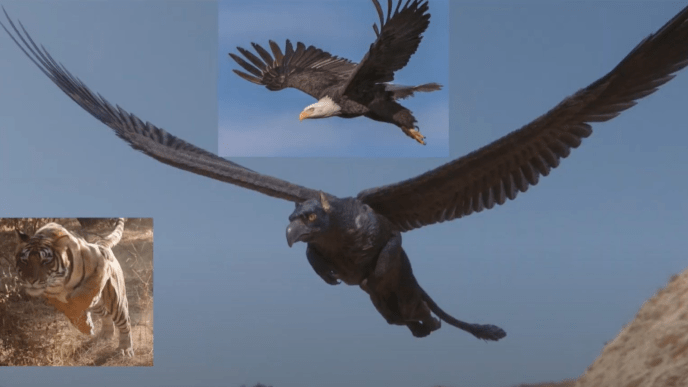
“Our goal was to ground our fantastical creature in reality,” Gagnon explains. A significant part of the design process involved extensive research into the anatomy of lions and eagles, as well as revamping Framestore’s internal template for wing movements. “This allowed us to build the creature with a convincing anatomical structure, while assuring tangible and believable movements on screen.”
One of the biggest challenges the team encountered was bringing to life the creature's large, alien cat eyes. “It was a bold design choice that pushed the boundaries of our creativity and innovation. The eyes are often referred to as the windows to the soul, and in the case of our creature, they were a key element to add depth to it. Finding the right stare, the right design, and the right size for these captivating eyes was a journey in itself,” recalls Gagnon. The facial expressions around the creature's eyes was another point of emphasis.“We aimed to translate the ferocity, stare, and presence of the creature through a comprehensive set of controls that allowed for a wide range of expressive emotions”.
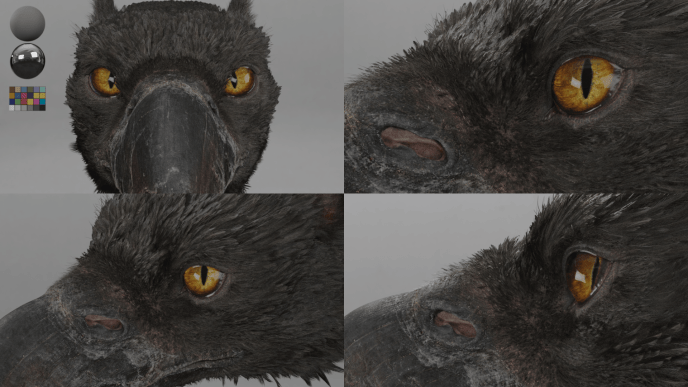
Additionally, the rendering of the feathers was a key aspect. Bennu’s plumage was carefully crafted with a wide diversity in feathers, all modelled separately for different body parts. ”We used twelve different types of feathers for the body alone, each with unique properties and functions,” explains Groom TD, Antoine Blanchin.
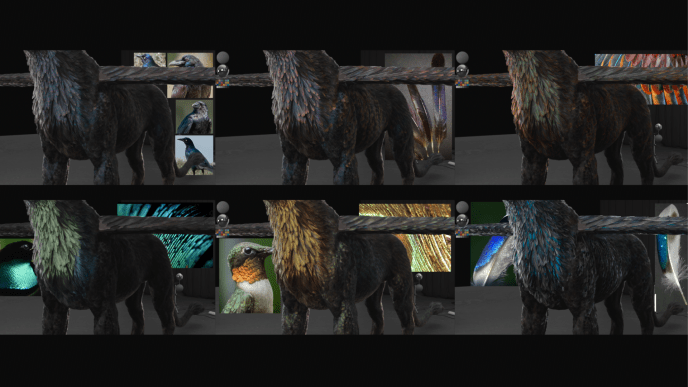
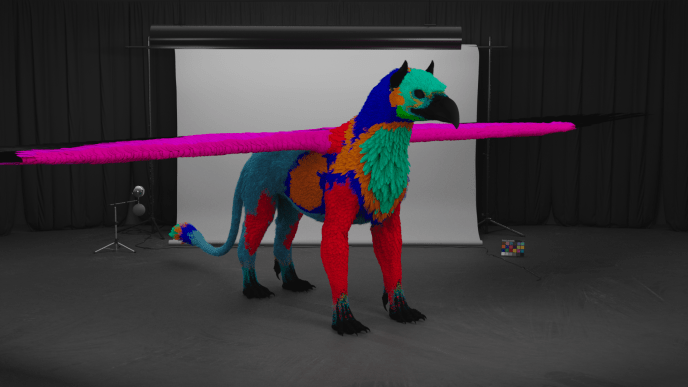
Harmada is a large-spider-like alien combining human upper body features with spider legs, blue crab shells, mantis-like front arms, and a translucent abdomen. Jena Malone wore a latex costume enhanced with oil and gel for an authentic alien appearance, complemented by prosthetic eyes on either side of her head. To simulate the creature's movement, Malone was mounted on a wheeled metal structure, manoeuvred by stuntmen to replicate the intended CG spider leg movements.
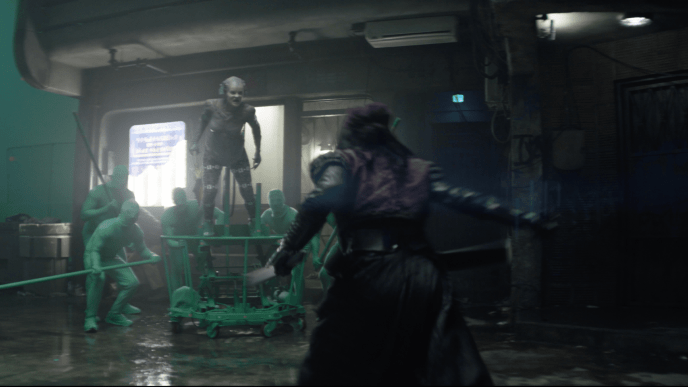
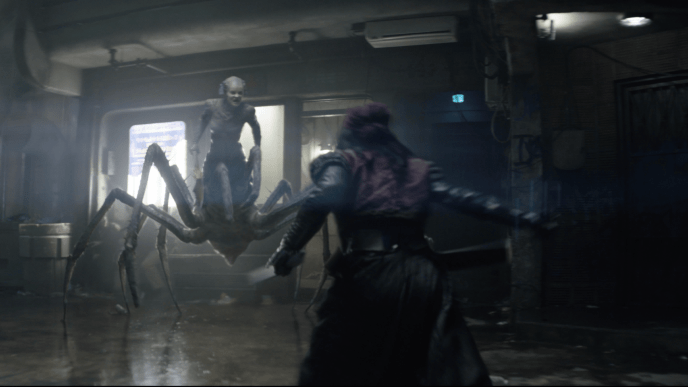
Jena’s live-action performance (chest, shoulders, both human arms and facial acting) was excellent. The CG augmentations and extensions required to match this needed meticulous precision in terms of: tracking, matching the live costume look & feel, and blending it all seamlessly in compositing.
The process began with creating an exact CG duplicate of Malone, establishing a baseline for detailed modelling and texture work. The team then assessed and adjusted the Harmarda’s proportions, ensuring contextual accuracy in the scenes. The next phase involved comprehensive CG development, encompassing modelling, sculpting, texture enhancement, and shader refinement.

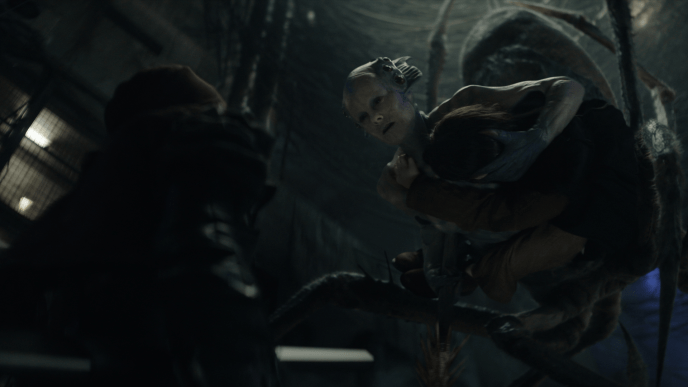
“Our biggest challenge was the complexity in the multiple variants of that asset, during the evolution of the fight sequence. The management of the additional scars dynamically added, cutting off arms and pincers progressively, from shot to shot. This required coordinated efforts across multiple departments – modelling, texturing, LookDev, rigging, CFX, FX, animation, lighting, and compositing. Unlike linear processes, this required intricate interaction among all elements, details LaFlamme.
Interstellar Environments
Rebel Moon introduces an entirely new sci-fi universe full of original planets and environments with their own distinct look. Framestore created spectacular, vast and complex environments including Neu-Wodi, Daggus, and Gondival, which saw the team using and building upon a new USD “Universal Scene Description” pipeline, with the goal of increasing efficiency in managing large builds and assets.
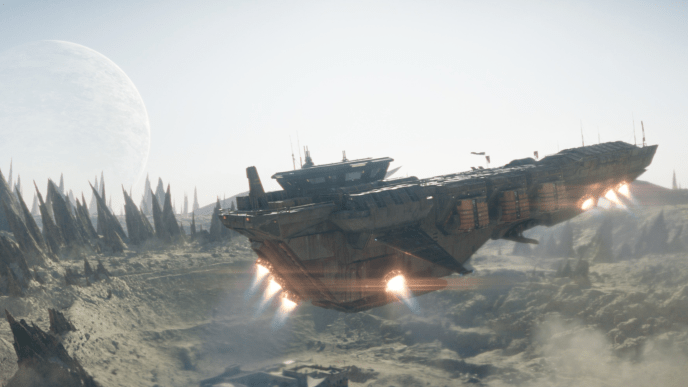


Our work heavily relies on instances, as we use hundreds of them. The transition to USD was about managing these instances more effectively. Compared to our older system, USD offered more power, better memory management and rendering of instances.
Neu-Wodi, where Tarak is recruited and catches the Bennu in an epic flying sequence, is a mountainous desert with many rocky spikes jutting up from its surface. Due to the complexity of the scene including many shots with dynamic speed ramps, it was crucial to convey a sense of scale. “We relied on the density of detail and texture to convey scale. Reference materials played a crucial role, especially those with human-scale elements for comparison. It was about finding the right balance of detail at different scales to create a believable environment.’ explains Tooley. Close communication between the environment, animation and lighting teams was crucial. “For New-Wodi, we worked with the animation team to block out the flight path and then built the environment around it. Consistency with lighting was key, especially when integrating our environments with live-action plates. We ensured our ambient and key lighting matched the lighting department's work, adapting as needed,” details Tooley.
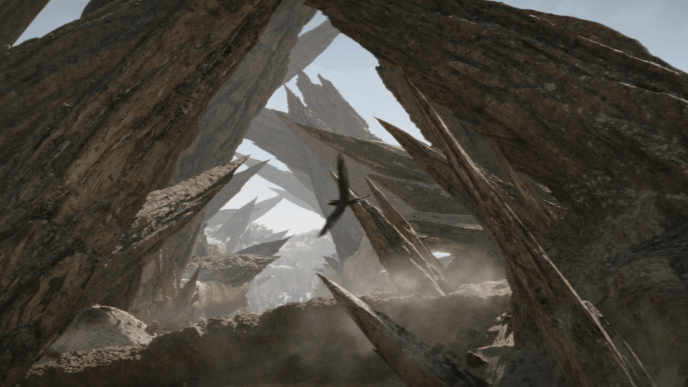
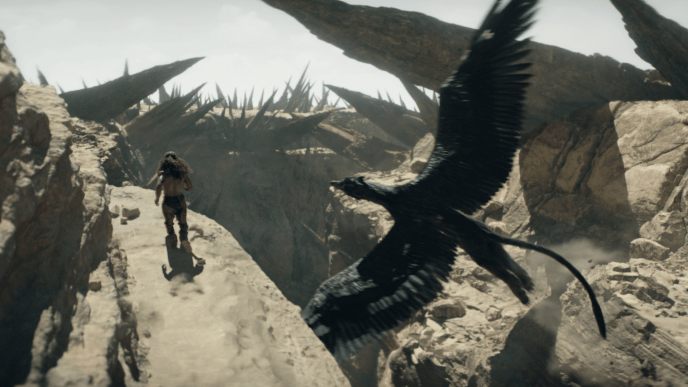
From storyboard to final composite, the focus was to create a consistency to the cinematography throughout the scene. The elements generated in principal photography were the foundation for the virtual camera operation. To ensure consistency, the virtual camera rigs are given the same articulation limits as the physical camera rigs.
For Providence, the frontier town, the environment team created establisher shots both for the city and the planet itself. “For Providence, the challenge was creating a cohesive and compelling atmosphere, considering the different scales and details required for various shots”, details Tooley. “To create the planet, we used our renderer's shader for generating realistic atmospheres and clouds, based on physical scales and light reactions. This process involved combining real cloud photography with Houdini-generated clouds to create a layered, volumetric atmosphere”.
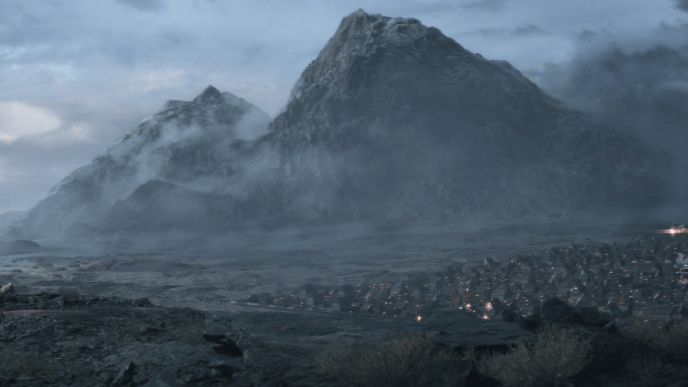
Gondival’s Third Act Cliffhanger
In the gripping finale for Part One, the action culminates to its climax in the third act, the Gondival Trap, a thrilling action-packed sequence which spans a breathtaking 20 minutes. The complex choreography required close collaboration between the Montreal and Vancouver teams to bring to life more than 350 intricate shots. “Handling this sequence was a monumental task in terms of scale. Ensuring consistency across each shot, given their complexity and the numerous layers involved, was particularly challenging,” comments FX Supervisor, Ruben Villoria Serrano. With the goal of creating a seamless integration of the CG and practical, the process was rooted in a physically based approach.
We always try to find a justification for doing things based on physical theories, which helps in making the effects believable to the audience.
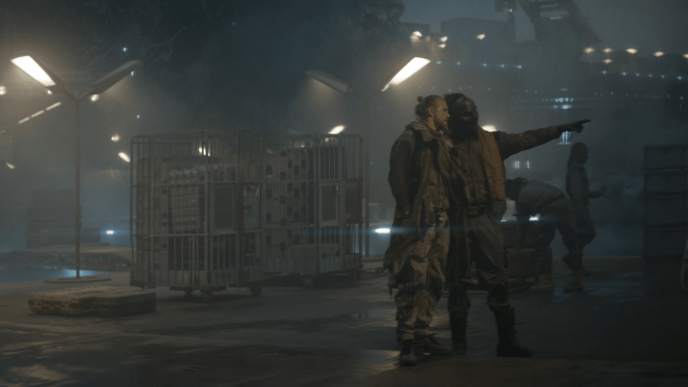
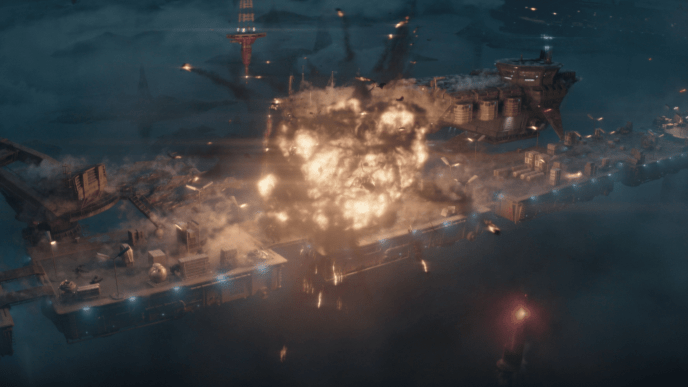
The primary challenge was to develop a dynamic and immersive environment that seamlessly interacted with various elements like ships and characters. A critical aspect involved creating a saturated, moisture-rich atmosphere for Gondival. “The atmospheric texture was central to crafting the overall aesthetic of the sequence. It added depth, making the scene more intricate. We aimed to immerse our CG world in this atmospheric setting, enriching its appearance. However, this also increased the complexity. From an action standpoint, coordinating the design of movements in shots between animation and its relation to FX was crucial”, details FX Lead, Taylor Fox.
This required development of sophisticated systems to scatter the atmosphere, manage its density, and ensure interactive dynamics with the ships as they moved through space. “To layer the atmosphere between the characters and objects in the plate, we generated deep holdouts using final keys and roto bound to 3D tracks”, explains Winter. The team had to maintain the right balance in the atmosphere, ensuring it was dense enough to be perceptible but not so heavy as to obscure the action. This balance required meticulous planning and coordination, particularly when integrating the characters' "energy tracers" – guns firing energy bolts – with the atmospheric conditions. Ensuring that every light source and element coexisted harmoniously was essential for a believable and visually coherent scene.
"To address these challenges, we developed numerous custom tools, particularly for managing time variations in effects, such as light pools and drifting clouds. These tools were designed to ensure that the FX work remained consistent and realistic under varying conditions”, concludes Villoria Serrano.
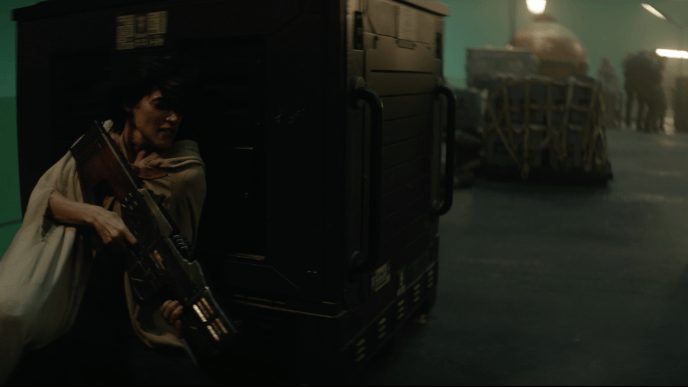
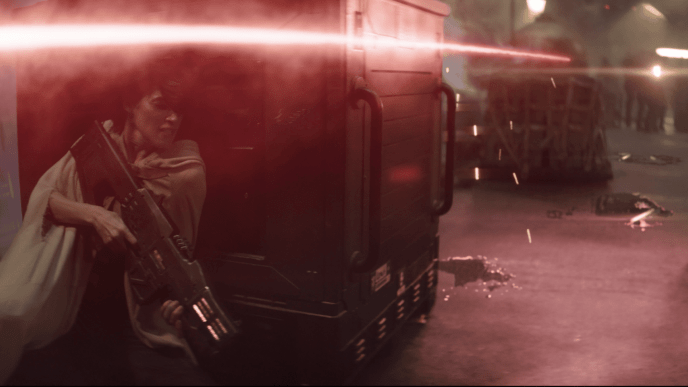
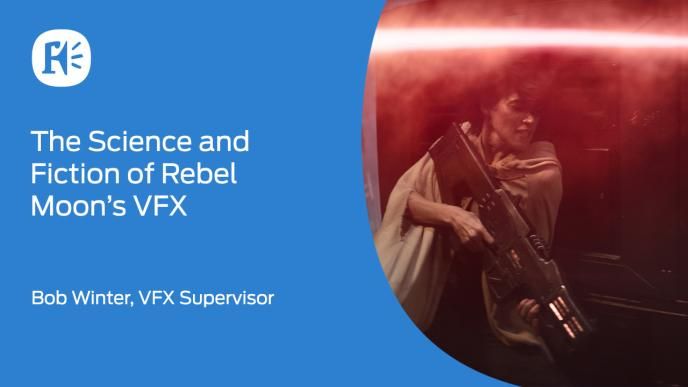
Press
Rebel Moon – Part One: A Child of Fire: Marcus Taormina – Production VFX Supervisor - Art of VFX
Framestore VFX Takes Flight on ‘Rebel Moon: Part One – A Child of Fire’ - AWN
Going from greenscreen buck to soaring creature - befores & afters Podcast
‘A grungy, gritty feel’ - before & afters
